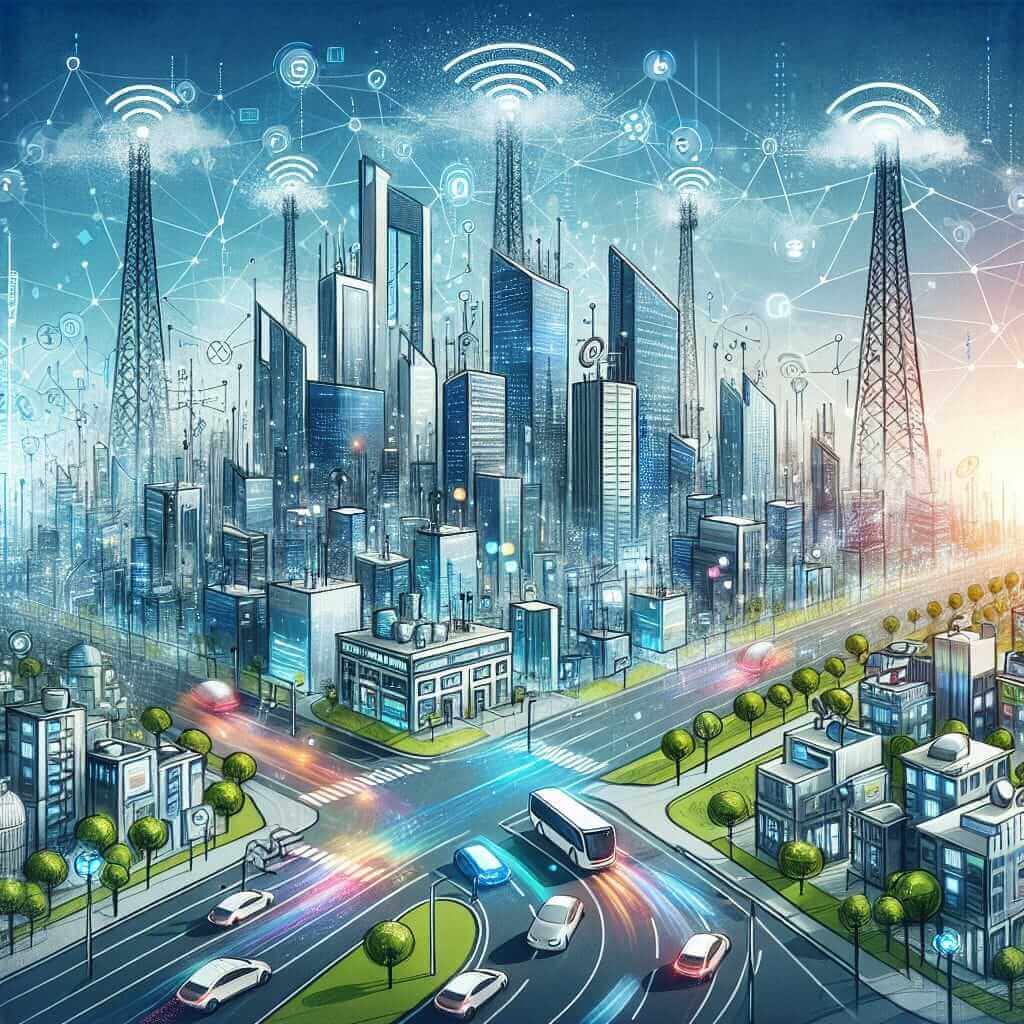The Reading section of the IELTS exam is a crucial part of the test, designed to evaluate various reading skills like skimming, scanning, understanding logical argument, and recognizing writers’ opinions, attitudes, and intent. One of the hottest topics that might appear in your IELTS Reading test is the influence of 5G technology on global telecommunications. Given the rapid advancements in technology, this topic is both relevant and substantial, making it a plausible candidate for your exam.
Reading Test Sample: Medium Text on 5G Technology
In this section, you will read about how 5G technology is influencing global telecommunications. This sample text is designed to closely mirror the style, format, and complexity of actual IELTS Reading passages.
Passage: How 5G Technology is Influencing Global Telecommunications
The advent of 5G technology is revolutionizing the telecommunications industry, providing unprecedented speed and reliability that is expected to transform both consumer and industrial sectors. With its broad frequency spectrum and low latency, 5G is set to facilitate advancements in various technologies such as internet of things (IoT), autonomous vehicles, and remote surgeries.
One of the primary benefits of 5G is its enhanced data transfer speeds. Capable of delivering speeds up to 100 times faster than 4G, 5G allows for seamless streaming of high-definition content, quicker download times, and better connectivity in densely populated areas. For instance, in smart cities, 5G can support thousands of connected devices simultaneously without congestion, thus improving urban life.
Moreover, 5G’s lower latency is a game-changer for real-time applications. In the realm of healthcare, this translates to remote surgeries where a surgeon can operate on a patient in another location using robotic instruments with instantaneous feedback. Similarly, in the automotive industry, 5G enables autonomous vehicles to communicate with traffic signals and other vehicles in real-time, enhancing safety and reducing traffic accidents.
However, the rollout of 5G is met with several challenges. The infrastructure required for 5G is significantly more complex and expensive than its predecessors. Unlike 4G towers that cover several kilometers, 5G requires a dense network of small cells spaced closely together, particularly in urban areas. This increased density raises concerns over the environmental impact and the feasibility of widespread installation.
Another challenge is the issue of security. With critical infrastructures such as utilities, healthcare, and transportation relying more heavily on 5G, the threat of cyber-attacks becomes more ominous. Ensuring the security and privacy of 5G networks is paramount to preventing potential disruptions in essential services.
In conclusion, while 5G technology presents tremendous opportunities for advancing global telecommunications, it also introduces new challenges that must be addressed. The successful implementation of 5G will depend on overcoming these obstacles and ensuring that the benefits are distributed equitably across different regions and sectors.

Questions
Type: True/False/Not Given
- 5G technology has been proven to improve internet speeds by 100 times compared to 4G.
- The main application of 5G in healthcare is limited to data management systems.
- 5G technology can potentially enable autonomous vehicles to improve traffic safety.
- The infrastructure for 5G is simpler and cheaper compared to 4G.
- The implementation of 5G raises concerns about environmental impact and cybersecurity.
Type: Multiple Choice
Choose the correct letter (A, B, C, or D).
-
One of the main benefits of 5G technology is:
A. Higher cost of implementation
B. Enhanced connectivity in rural areas
C. Increased data transfer speeds
D. Simplified network infrastructure -
In the passage, the infrastructure challenge of 5G mainly refers to:
A. The high cost and complexity for setting up
B. The environmental benefits
C. Being able to cover large distances with fewer towers
D. The ease of transitioning from 4G
Type: Matching Sentences
Match the following applications with their sectors (A-D).
- Remote surgeries
- Autonomous vehicles
- Smart cities
A. Healthcare
B. Transportation
C. Urban development
D. Utilities
Answer Keys
True/False/Not Given
- True
- False
- True
- False
- True
Multiple Choice
- C. Increased data transfer speeds
- A. The high cost and complexity for setting up
Matching Sentences
- A. Healthcare
- B. Transportation
- C. Urban development
Common Mistakes to Avoid
- Misreading the Question: Make sure to understand what the question is asking for, especially in True/False/Not Given questions.
- Overlooking Keywords: Pay attention to keywords and phrases in both the passage and the questions.
- Failing to Skim and Scan: Use skimming and scanning techniques to locate answers quickly without reading every word.
Vocabulary and Grammar
Vocabulary
- Advent (n.) – /ˈæd.vɛnt/ – The arrival of a notable person or event. Example: The advent of 5G technology.
- Latency (n.) – /ˈleɪ.tən.si/ – Delay before data transfer begins following an instruction.
- Seamless (adj.) – /ˈsiːm.ləs/ – Smooth and continuous, without any apparent gaps or spaces.
- Congestion (n.) – /kənˈdʒɛs.tʃən/ – Overcrowding; clogging.
Grammar: Relative Clauses
Relative clauses provide additional information about the noun and are introduced by relative pronouns like who, which, that, where, etc.
Example: The advent of 5G technology, which provides unprecedented speed and reliability, is revolutionizing telecommunications.
Tips for Scoring High in IELTS Reading
- Practice Regularly: Regular practice with IELTS-style texts will improve your reading speed and comprehension.
- Enhance Vocabulary: A robust vocabulary will help you understand the passages better and answer questions accurately.
- Time Management: Manage your time efficiently. Do not spend too much time on a single question.
- Read Instructions Carefully: Always read the instructions provided with each question type.
Remember, success in the Reading section comes with consistent practice and a strategic approach to tackling different question types.